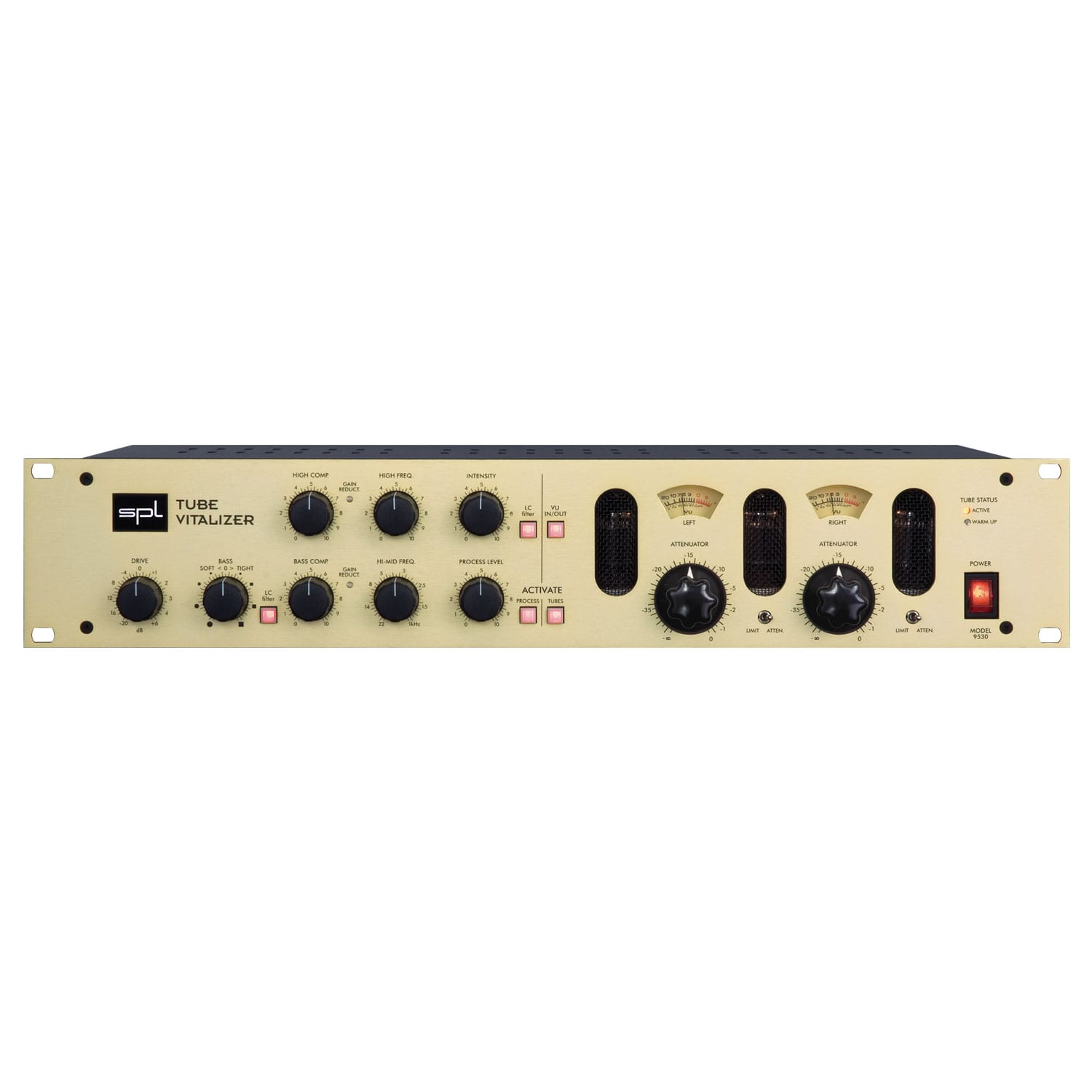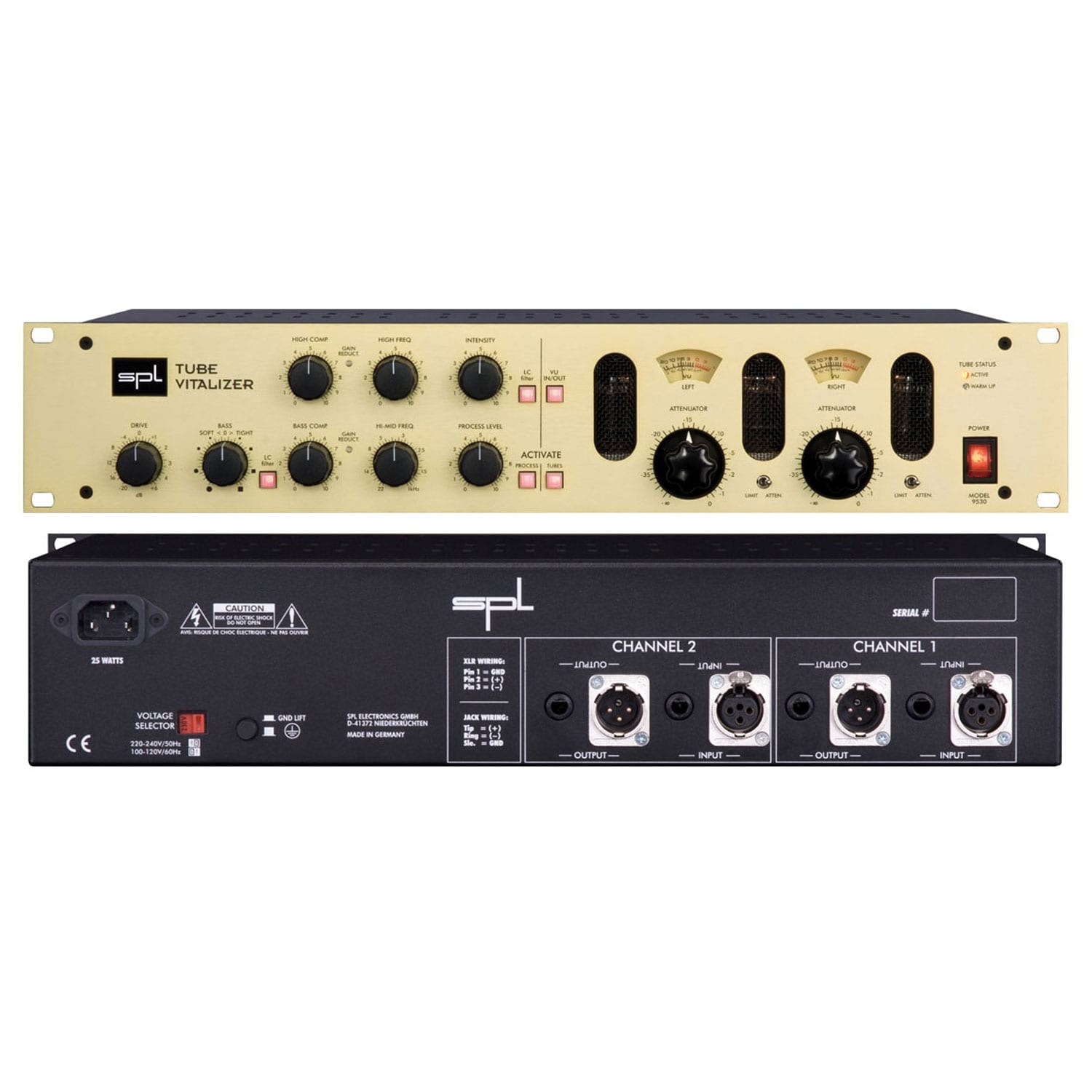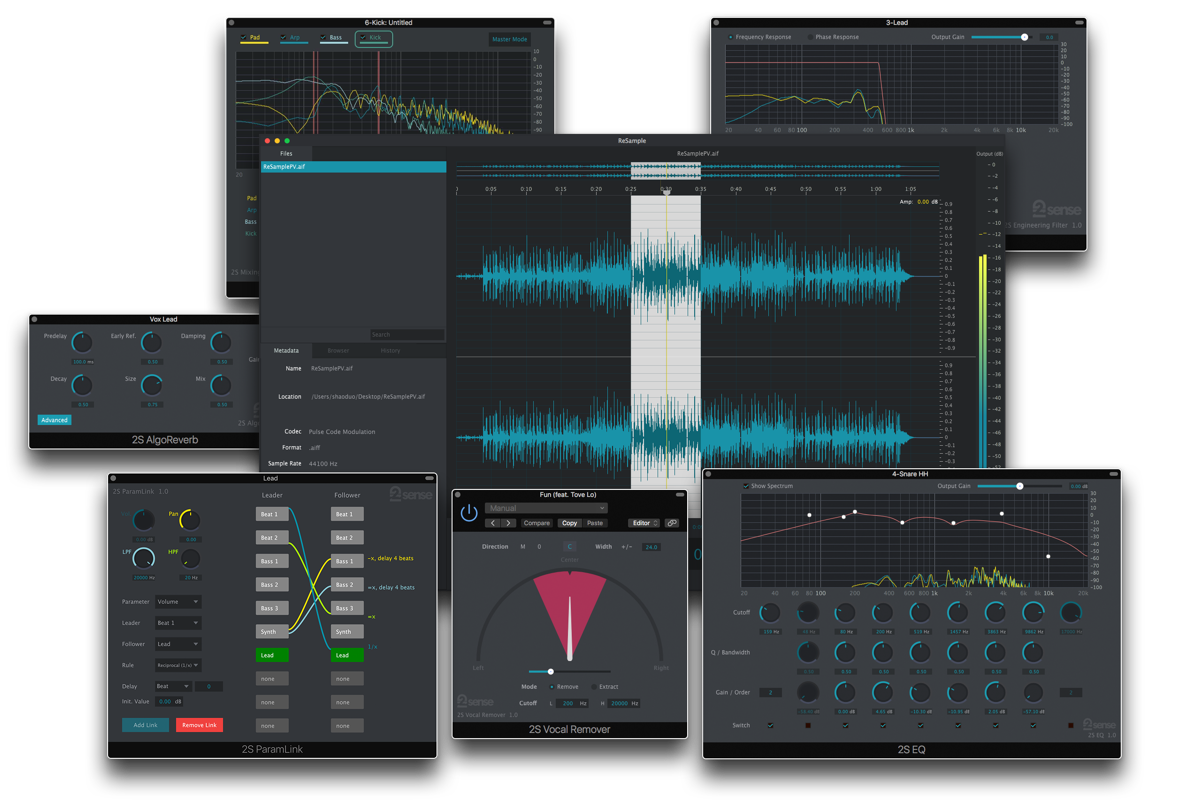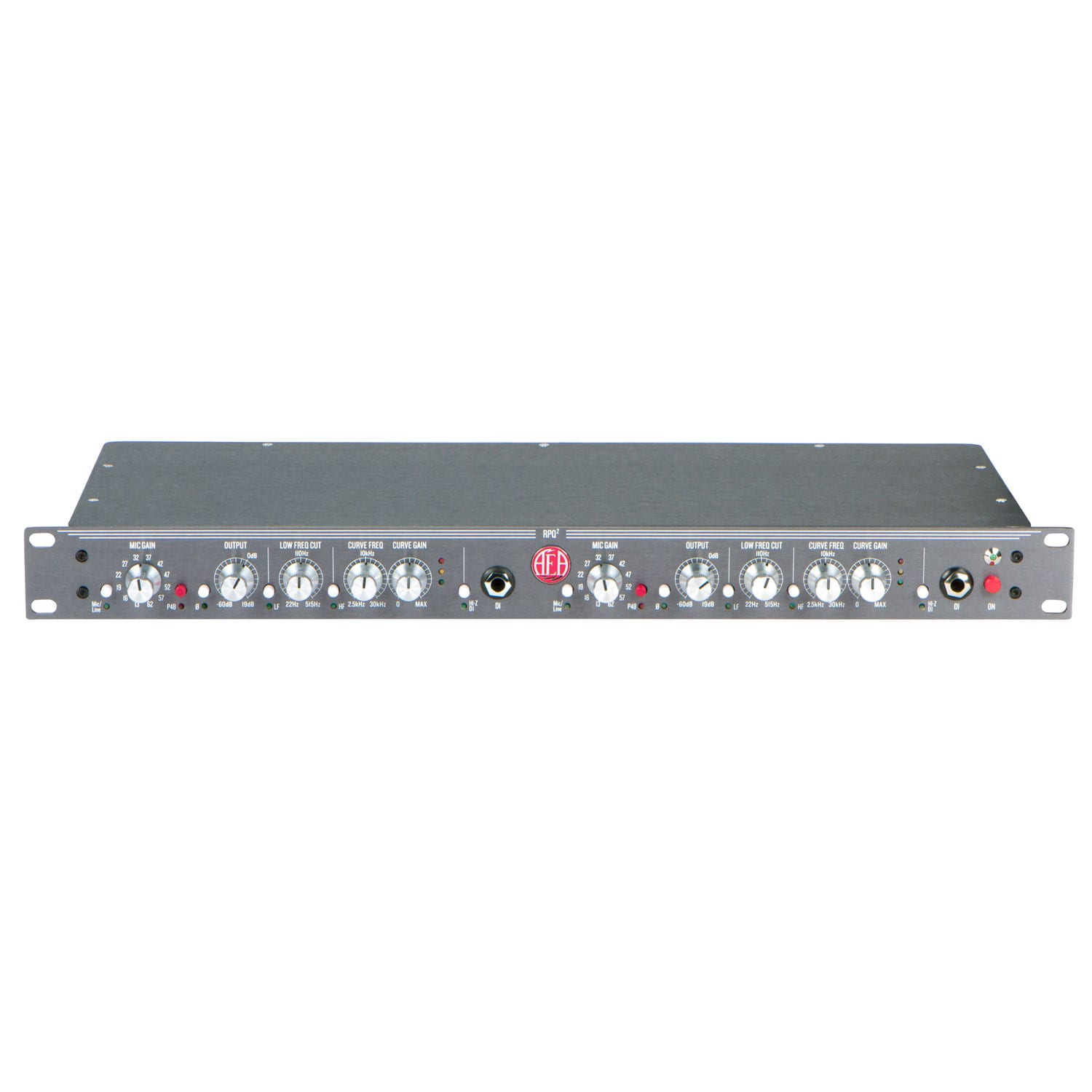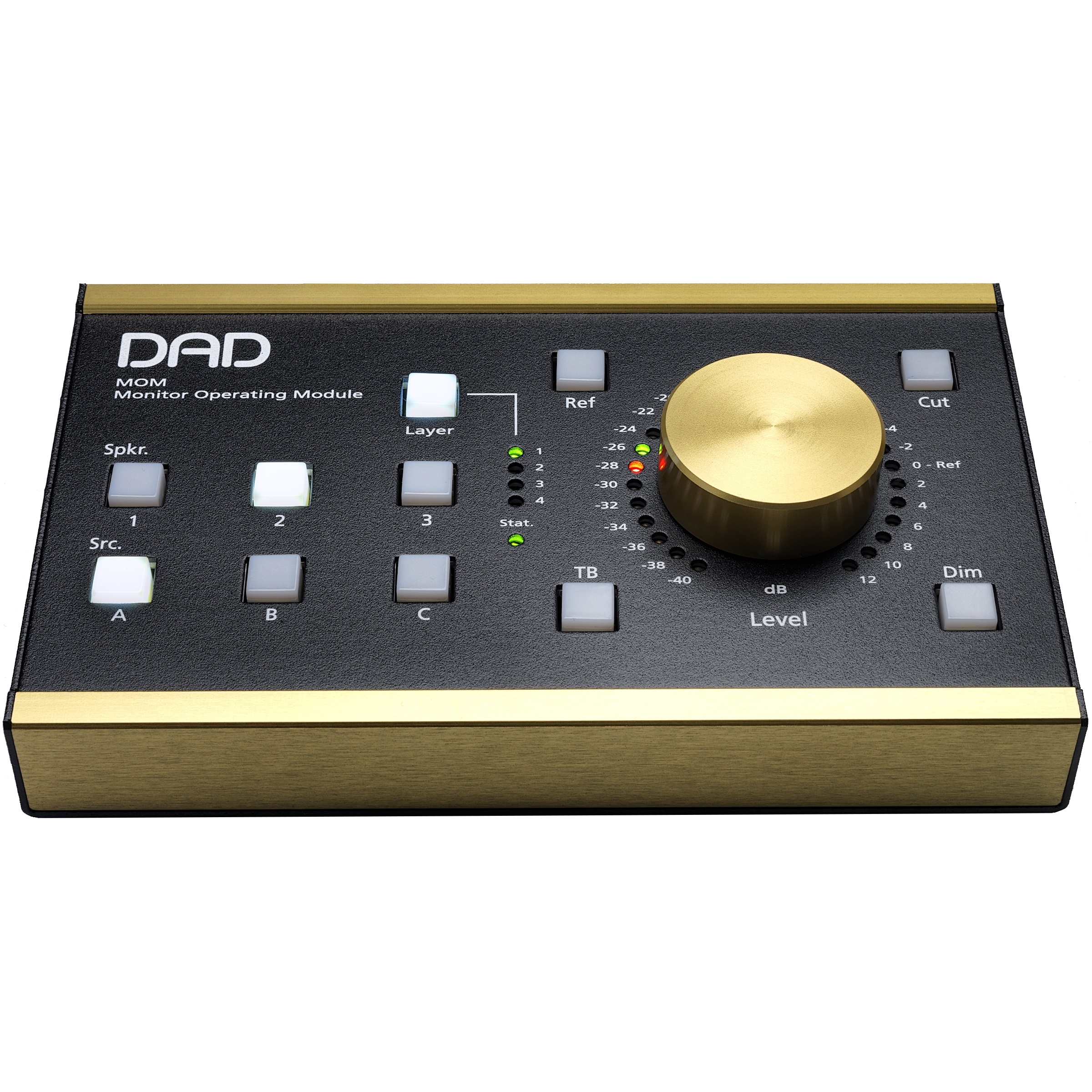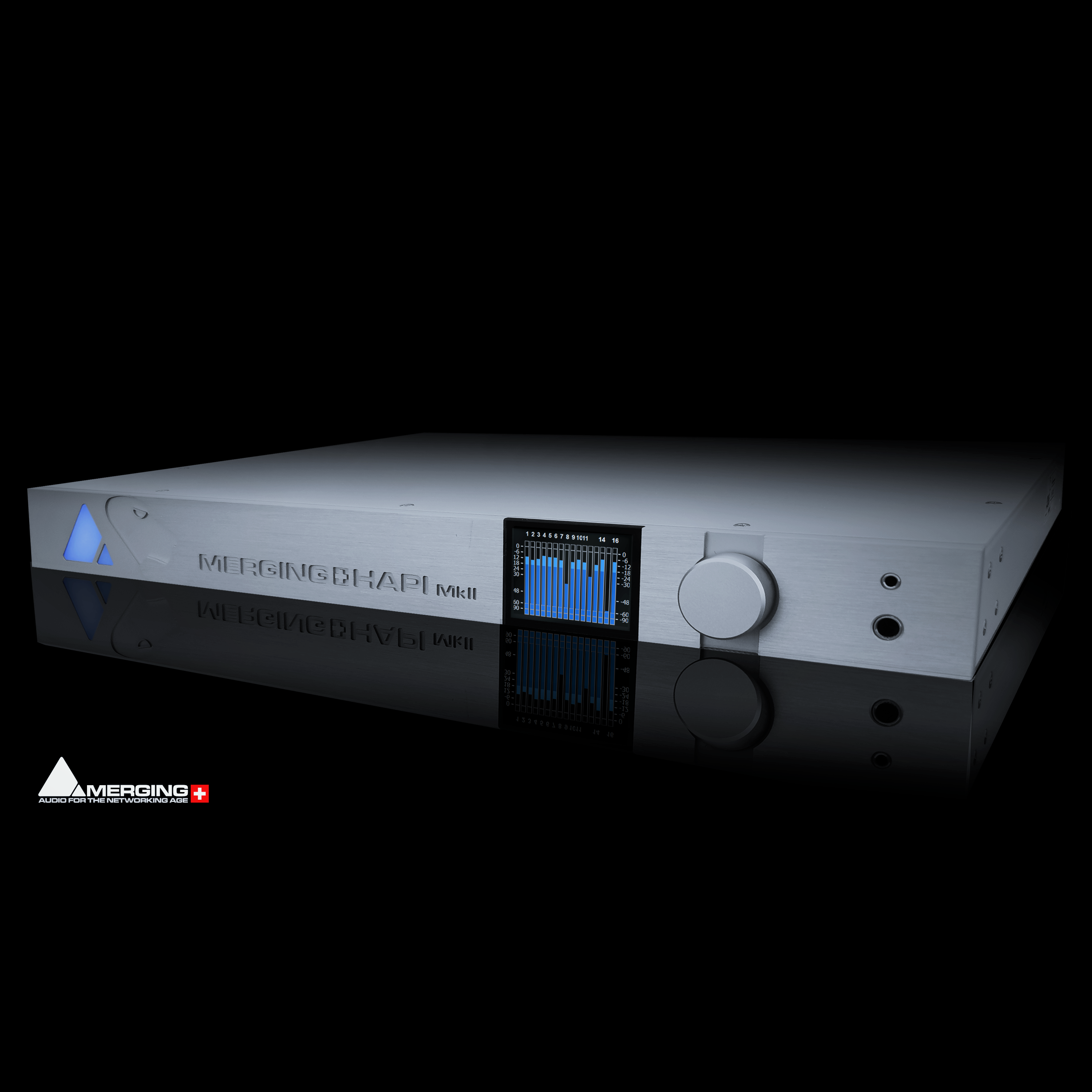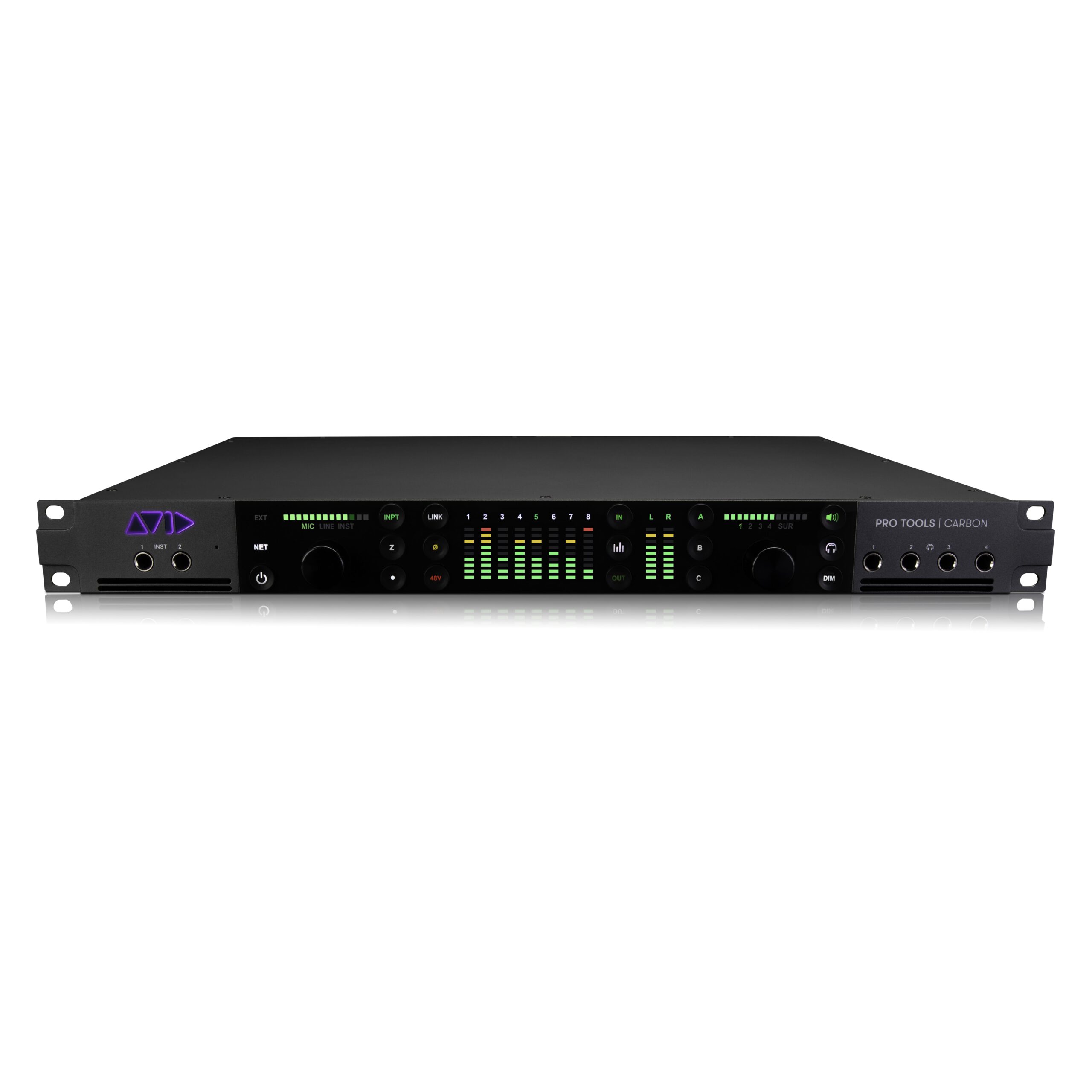Description
SPL Tube Vitalizer
A completely different type of EQ, with which almost virtuoso interventions in the sound image become possible. When mixing, mastering, and restoring, the Tube Vitalizer goes beyond traditional equalization.
The Vitalizer is based on findings from psychoacoustics and audiometry.
Its filter network is one of the few patented filters.
It makes the richness of detail of audio signals more audible. Interventions in the sound image are more of a musical nature. Music productions sound more natural, lively, differentiated, easier to understand, more deeply layered, and more widely spread apart.
Vitalizing
These are the five controls of the Vitalizer core circuit.
The drive controls the level going into the filter network. The bass emphasizes a soft or hard tone. The coil filter (LC) makes the bass pithier and the compressor catches level peaks.
Mid-Hi Tune sets the frequency of operation above which frequencies are boosted and below which frequencies are cut.
Process Level adjusts the intensity of Mid-Hi Tune and bass.
In addition to the Vitalizer core circuit, the Tube Vitalizer has a high frequency and harmonics processing stage with Frequency and Intensity controls and a switchable coil filter (LC) as well as a compressor.
The switchable tube stage is constructed with three tubes: first, left and right pass through their channel output tube, then the channels pass jointly through the third tube as a stereo signal.
As a little treat, the Tube Vitalizer offers a shunt limiter. This limits the level according to a characteristic curve tuned to the tubes and provides the signal with a sonic effect similar to the saturation effect of analog tape machines.
The De-Masking
A key feature of the Vitalizer is the unmasking of superimposed sound components. The Vitalizer thereby relates the time of perception of a frequency to its amplitude. Through a minimal temporal offset of loud frequencies, quieter, previously superimposed sound components are “de-masked” and thus become audible.
The Adaptation to Curves of Equal Loudness
The non-linear sensitivity of human hearing is described already in the 1930s by the “Fletcher-Munson curves”.
These “curves of equal loudness” (today defined by the standard ISO 226:2003) illustrate the equal perception of loudness as a measure of sound pressure level, over the frequency spectrum, for which a listener perceives a constant loudness when presented with pure steady tones.
The Vitalizer adapts the frequency spectrum to the curves of equal loudness, which improves the loudness perception in particular.
Inputs & Outputs
The two channels of the Tube Vitalizer are equipped with Neutrik XLR sockets and jack sockets connected in parallel. The signal transmission is electronically balanced with a nominal level of +6 dB.
Specifications
Analog inputs & outputs; XLR & TRS Jack (balanced)
Internal Linear Power Supply with Toroidal Transformer
Mains Power Supply
Dimensions & Weight
Reference: 0 dBu = 0,775V. All specifications are subject to change without notice.
